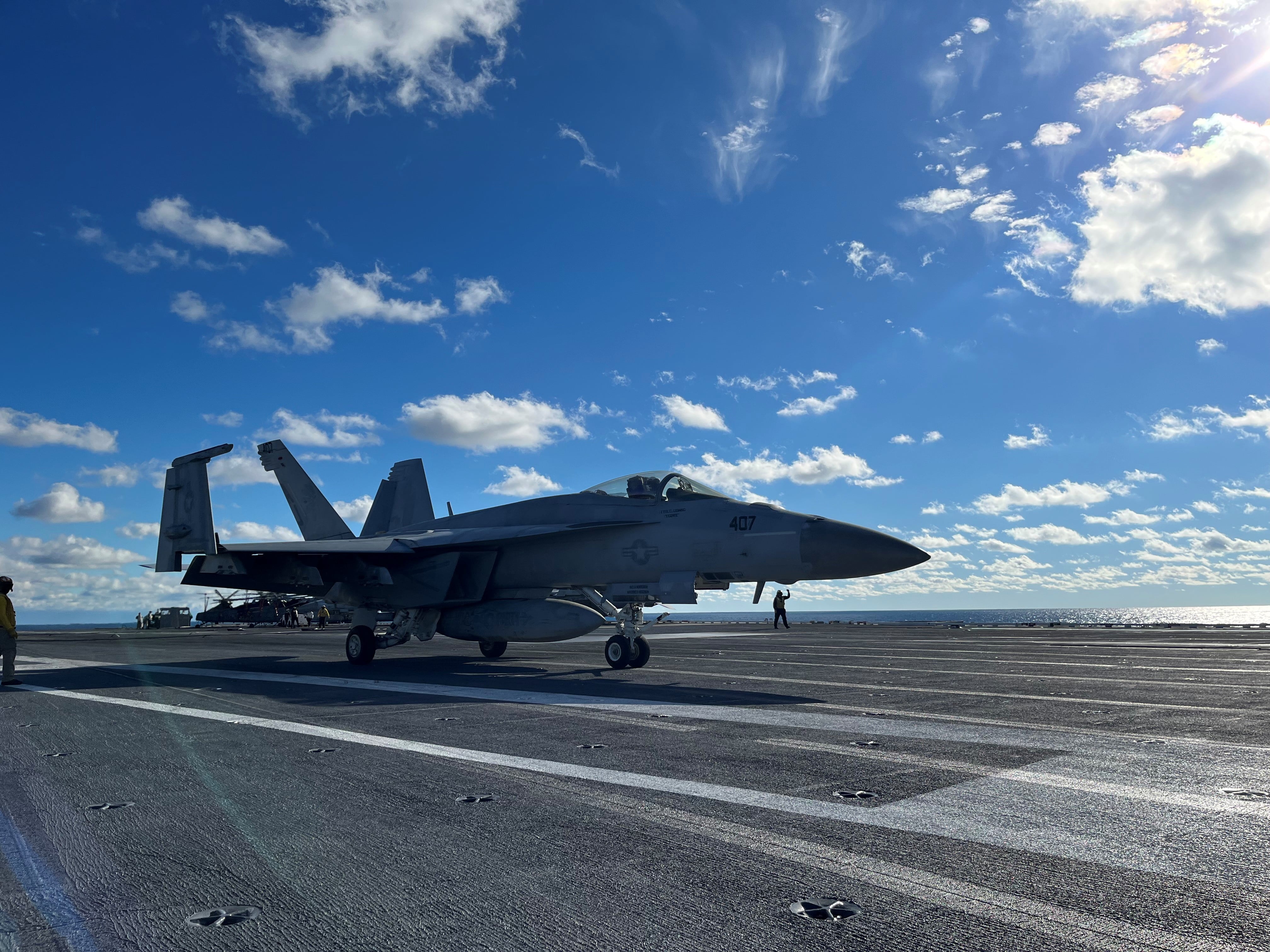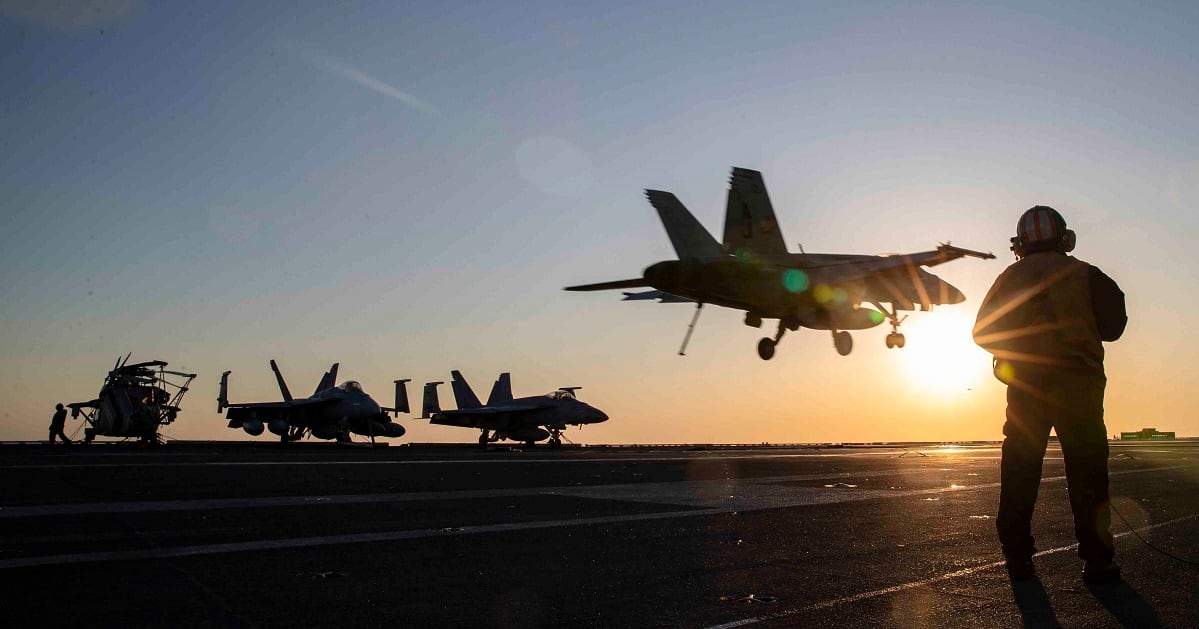U.S. Navy aircraft carriers George H.W. Bush and Gerald R. Ford are teaming up with three other allied aircraft carriers in U.S. 6th Fleet this month to bolster interoperability between NATO allies.
The goal is to evaluate NATO’s Deter and Defend concept in the Mediterranean and North Seas with the French Navy’s Charles De Gaulle, the Italian Navy’s ITS Cavour and the United Kingdom Royal Navy’s Queen Elizabeth. Standing NATO Maritime Groups 1 and 2 are overseeing the operations.
“NATO routinely demonstrates its cohesion, coordinating with multiple international maritime assets at once,” Royal Navy Vice Adm. Keith Blount, commander of NATO Allied Maritime Command, said in a statement Friday. “This opportunity demonstrates our ironclad commitment to the stability and security of the Euro-Atlantic Area and the strength of our collective capability.”
“Five carriers within our operating area presents a further opportunity to consolidate our approach to air defense, cross-domain cooperation and maritime-land integration,” Blount said.
The George H.W. Bush deployed from Norfolk, Virginia, in August to replace the carrier Harry S. Truman. The Bush Carrier Strike Group includes the guided-missile destroyers Nitze, Truxtun, Farragut and Delbert D. Black, the guided-missile cruiser Leyte Gulf, and Carrier Air Wing 7.
Meanwhile, the Ford departed Norfolk on Oct. 4 for a service-retained deployment. That means the strike group is operating under the authority of Chief of Naval Operations Adm. Mike Gilday, rather than a geographic combatant commander, which would be the norm during a global force management deployment.
This initial deployment will prepare the carrier for a longer, more routine deployment in 2023.
RELATED

During this initial period underway, the Ford is working its way through eight phases that include air defense exercises, maritime domain awareness, long-range maritime strikes, distributed maritime operations, anti-submarine warfare exercises and naval integration.
It will carry out these missions with allies and Carrier Strike Group 12, which includes destroyers Ramage, McFaul and Thomas Hudner, the cruiser Normandy, the replenishment oiler Joshua Humphreys, the dry cargo ship Robert E. Peary and U.S. Coast Guard cutter Hamilton.
“We start with air defense exercises. We’ll be doing a war-at-sea maritime strike and operations; we’ll be doing distributed maritime operations where we extend the force to a bigger footprint,” Ford’s commanding officer Capt. Paul Lanzilotta told reporters in October. “And whether it’s our satellite communications, or the aircraft embarked on the ship that extend our line of sight, we’ll use all of that to maneuver the force. We’re going to practice all of it.
“It’s not good enough for the United States Navy to just operate, and operate the same way; we have to keep getting better,” Lanzilotta said. “So, I need to be able to provide objective, tangible things that our Navy can work on to do what we do better.”




